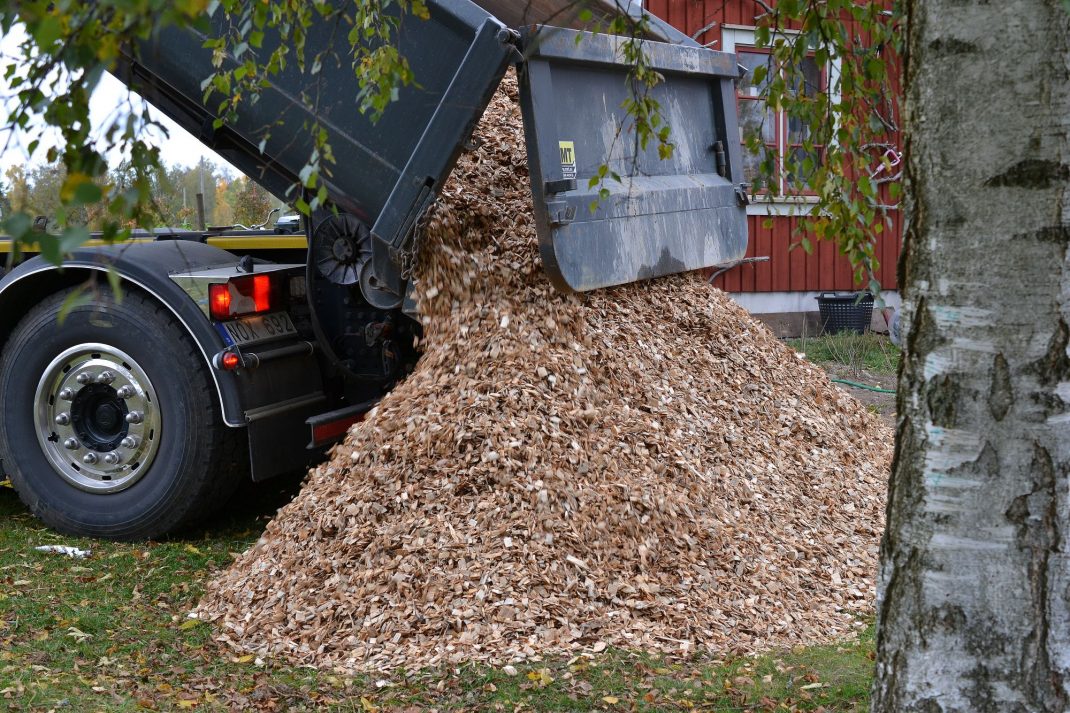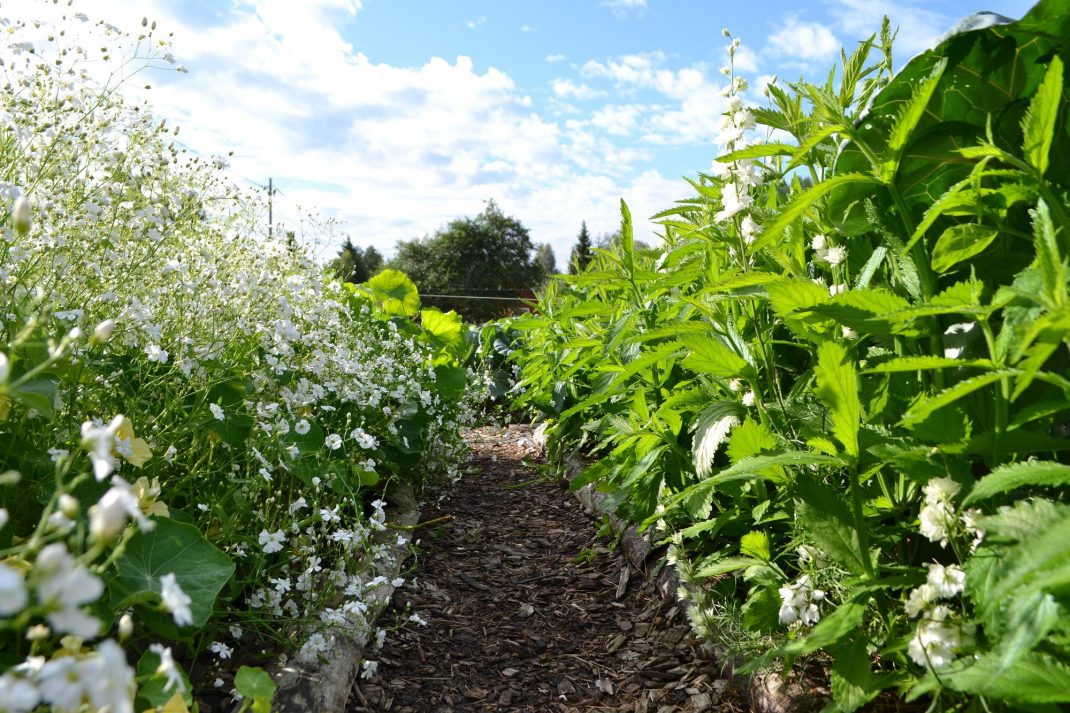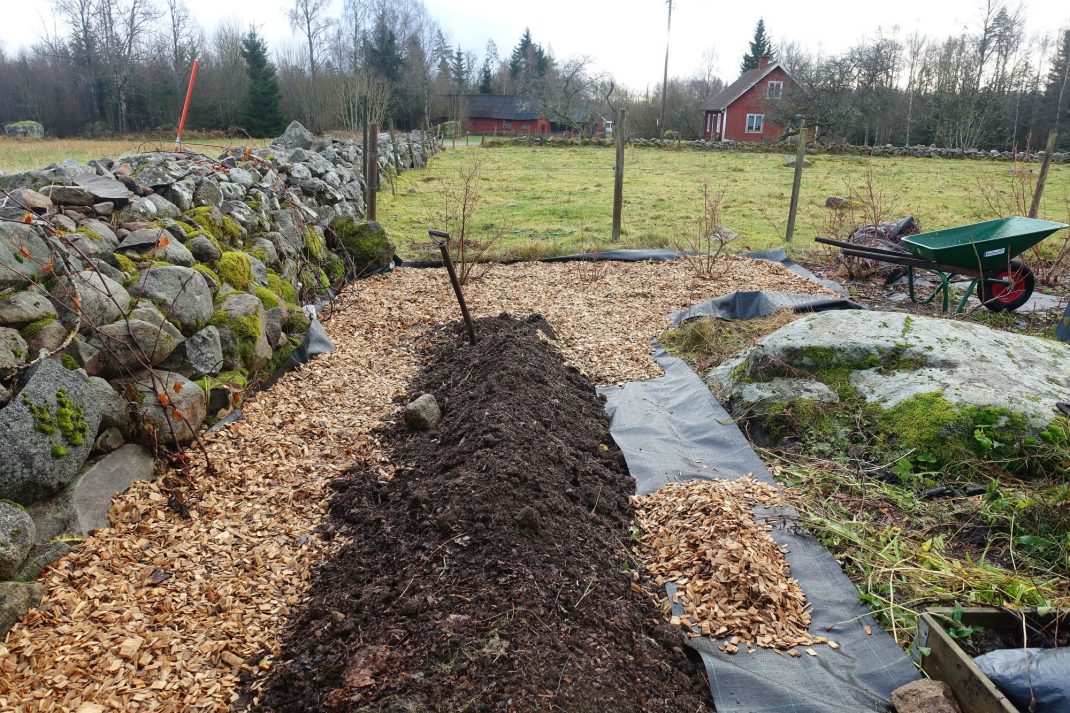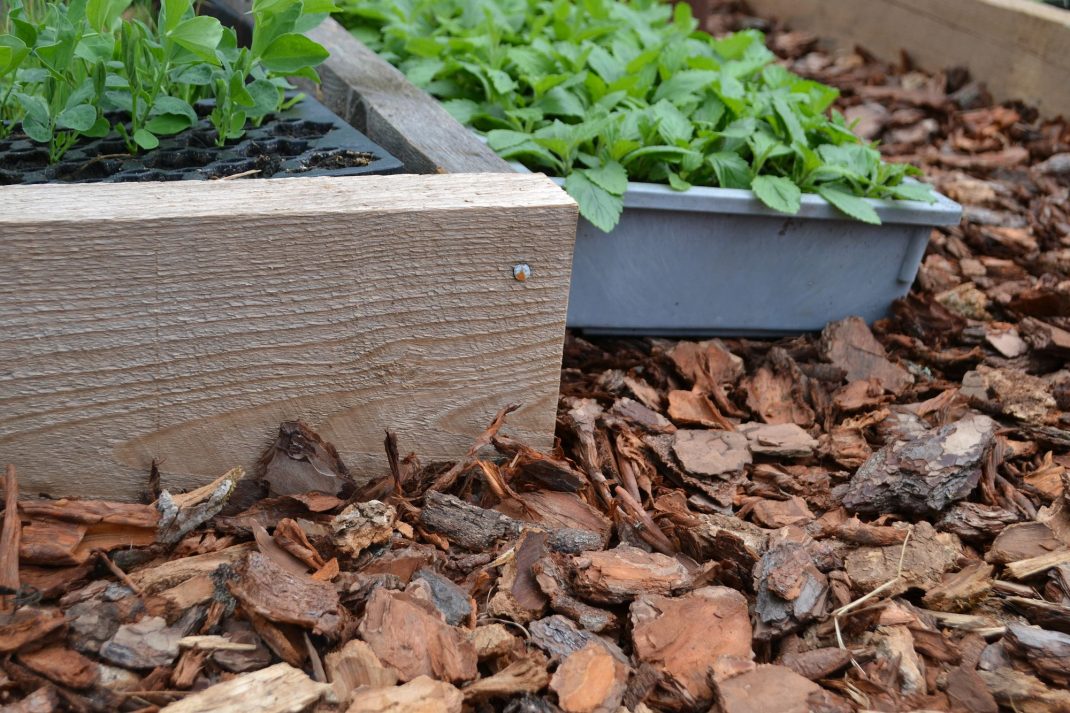Guide: Using wood chips in the garden
This is one of my favorite materials to use in the garden! Wood chips are both extremely useful and also quite pretty next to the bright green plants. Learn all about them in this guide.

This is what it looked like when my wood chips arrived!
Wood chips seem to be a very specific area of interest for many of my readers here on the blog. I get so many questions whenever I share a picture of a project involving wood chips. This is my first article specifically dedicated to this subject though. So, why not make an in-depth guide? This is my take on using wood chips in the garden.

I use wood chips for the main pathways in the garden. The smaller paths were made with soil, leaves, straw etc.
Why wood chips?
It started in 2010 when I was looking at paving slabs for my garden. I wanted to use them for a new patio and the kitchen garden. My heart sank when I saw the prices though. It was so expensive, and spending so much on slabs just didn't make sense to me. Well, it wasn't actually the slabs but the work on preparing the ground underneath that really cost quite a lot. Could there be a cheaper alternative?
I started my kitchen garden in 2011, for around 10 000 Swedish crowns (including digging and soil) and I only had dirt pathways between my beds. Couch grass, nettles and other weeds grew here and I removed them while trying to figure out a better plan.
A visit to our local sawmill did the trick. I saw an enormous pile of wood chips on the ground, a byproduct of the mill. It dawned on me that I could use it, or something similar, to cover my paths. I remembered others doing the same in their own gardens. All I apparently needed was landscape fabric and wood chips. The price really sealed the deal though. Only 125 Swedish crowns per cubic meter. I decided that this was the way to go.

My kids love playing in these large piles!
Buy in bulk
The only problem was that the mill only wanted to sell large quantities at ones. The reason being that it was very difficult to control the flow of wood chips when they poured it. I started with 350 cubic ft (10 cubic m) and a friend of mine with a tractor drove it home in exchange for beer.
So, the main reason why I started using wood chips in my garden was the price and the convenience. It's so easy to use and I didn't need to prepare anything particular beforehand. The material is quite light, so I knew that I would be able to work with it on my own. Wood chips are also really nice and soft to walk on, which is great when you have kids and dogs at home. And last but not least, it looks great too!

Baby's breath and giant verbena along one of the pathways in the garden.
How much?
As you now know, I got my first load of wood chips (350 cubic ft, or 10 cubic m) from my local wood mill in late summer 2011. But I was far from done of course.
I have of course kept coming back for more, mostly for a few bags of bark here and there for my polytunnels. We waited until 2016 to start adding more wood chips to my projects outside though. I had bought around 1400 cubic ft (40 cubic m) the previous year and decided to use them for a patio on the south side of the house, as well as around my large polytunnel. And after that, I still had some wood chips left for the paths.
I bought some more in 2017, around 530 cubic ft (15 cubic m), to make the pathways along my stone wall as well as an area where I wanted to make a straw-bale-garden.
Where can I get them?
I bought the largest batch (the 1400 cubic ft one) at the local sawmill too, but I hired a firm to help me move it here. It was a lot cheaper than the 2017 batch though, which I ordered from a company. The difference in price actually surprised me. So if you have a sawmill nearby, you might want to try buying straight from them.
The chips I'm using are a regular mix, no particular kind of trees for example like you can find in playgrounds and public parks. The chips last longer than bark, in my experience. So, I don't need to keep adding new ones all the time. The bark, however, it often dries out and breaks apart when we walk on it. Even larger pieces from the sawmill do.

I'm adding new wood chips around the beds by the stone wall.
How should I use wood chips?
I mainly use the wood chips for my paths in the kitchen garden, and inside and around the large polytunnel. I also use them for our little patio facing south too. My plan is to start using even more of them in my pathways as my perennial garden grows on the north side of the garden.
Before covering the paths, my main issue was couch grass. So, I decided that I would rather be safe than sorry so I started with a layer of newspapers and then landscape fabric before adding the wood chips on top. This method seems to have been very efficient, I haven't had any issues with couch grass in my paths since.
As time went on, I felt like I could skip the layer of newspapers and instead just add a thicker layer of wood chips. A thick layer really pushes the landscape fabric straight down on the soil, making sure that the weeds don't stand a chance. You only need a season or so with landscape fabric and wood chips before the weeds die down completely. Earthworms and other little critters do just fine though.
More garden inspiration: A beautiful cottage garden
Use them with landscape fabric
The fabric I'm using is called Mypex, made from black polypropylene. You can find it in any regular garden center, but I buy large rolls (330 ft, or 100 m.) There are plenty of different sizes to choose from online though. The last ones I bought were around 1 ft 7 in and 5 ft 4 in wide.
Do you really need to use landscape fabric? Isn't newspapers and wood chips enough? The answer is no, it's not. Trust me! The weeds grow back in no time, even when you use newspapers. What happens is, that the newspapers start to decompose under the wood chips and after that, the wood chips are affected too. Sooner or later, the weeds can start pushing through and then you have to do it all again. Which is a real drag, since spreading the wood chips is such a big job.

I love the way the wood chips look against the green plants. Don't worry if the landscape fabric is showing, the plants can cover it quite easily.
Some of my followers here at Sara's Kitchen Garden are very anti-plastic and probably hate the thought of using landscape fabric. But for me, a mother of four who works almost full time, it's pure magic. It's easy to use and is a great quick fix in any garden. In the future, I think I'm going to have more time for other methods. But I would rather have my plastic fabric than an overgrown garden that's difficult to work with.
Is it safe?
Now and then, I see people commenting that I shouldn't use wood chips in my garden because it's harmful. I don't know what to say about that, other than that I don't believe it.
I haven't read anything supporting the idea that wood chips are harmful though. The wood chips are a natural product that gets decomposed in time. And the phenol and other substances in bark don't impede on the growth. Whenever plants fail to grow in wood chips or bark, the reason is most likely a lack of nitrogen. But I'm only using the wood chips to cover the paths and not my beds. I do it in good conscience and I love the fact that I can use material from our local forests in my garden.

I use both bark and wood chips on the ground in my polytunnel. It looks great and really does the job too.
I hope this post gave you some ideas on how you can use wood chips in your garden. I just love this material! If I had a larger garden, I probably wouldn't mind keeping a large pile around all the time. This is not the best season for admiring them though, but they look great in the paths when my beds are overflowing!
/Sara Bäckmo
23. January 2023



Leave a Reply
You must be logged in to post a comment.